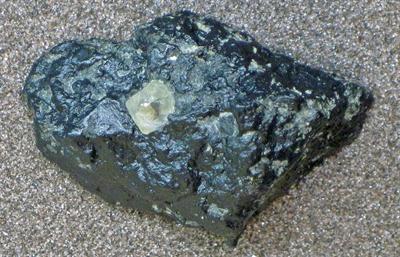PDF chapter test TRY NOW
Earth is not only what we see. Because we see only the surface of the Earth, but if we were able to hold the Earth in our hand and slice it into half, in the cross-section, we could see multiple layers. Despite much research, the interior of our world continues to hold some mysteries for us. Despite exploring other worlds and deploy satellites into orbit, the inner recesses of our planet remain off limit from us.
Advances in seismology have enabled us to learn about the Earth and the layers that make it up. Each layer has its own characteristics, composition, and properties. They are in order, from the outer to the inner – the crust, the mantle, the outer core, and the inner core. Let's take a brief look at them.
Crust
The crust is the outermost layer of the Earth, consists of a broad mixture of rock types. The average thickness of the crust ranges from \(5\ \)kilometres (Oceanic crust - under the oceans) to \(30\ \)kilometres (Continental crust - under the continents). Compared to other layers, it is extremely thin, cold and brittle.
Continental crust (upper layer) is of granitic type and is mainly made of silicate and aluminium rocks. It is called SIAL (Lower in density with \(2.7\)g/cm³). The oceanic crust (lower layer) is of the basaltic type, typically composed of silicate and magnesium igneous rocks. It is called SIMA - higher in density with \(3.5\)g/cm³.
‘Lithosphere’ and ‘crust’ are not the same. The lithosphere includes the crust and the uppermost part of the mantle. All terrestrial planets have a lithosphere. However, the lithospheres of Mercury, Venus, and Mars are much thicker and more rigid than Earth's.
Mantle
The mantle is the Earth’s layer that lies between crust and core. Below the crust, a narrow zone with a change in mineral composition is called the Mohorovičić (Moho) discontinuity, which separates crust and mantle. The mantle extends downward to a depth of approximately \(\ 2,900 \) kilometres from the Moho discontinuity. The major elements of the mantle are Silica (Si) and Magnesium (Mg), and hence it is also termed as SIMA. The upper mantle has solid rocks whereas, the lower part with molten rock called Magma.
Diamonds are tiny pieces of the mantle we can touch. Most form at depths of about 150 to 200 kilometres from Earth surface. But rare “super-deep” diamonds may have formed as far down as 700 kilometres below the surface. These crystals are then brought to the surface in the volcanic rock known as Kimberlite.

Kimberlite with diamond
Core
The core is the innermost and hottest layer of the Earth, which lies below the mantle. The core and mantle are separated by a layer called Weichert–Gutenberg Discontinuity. The core is a ball-shaped layer with a thickness of approximately \(3,400\ \)kilometres beneath the mantle. Further, the core is divided into two layers as Liquid outer core and Solid inner core. It is dominantly made up of nickel and iron (also called NIFE).
The iron core is responsible for the Earth's gravitational force and magnetic field. Due to the Earth's rotation on its axis, the liquid outer core spins over the solid inner core and generates the Earth’s magnetic field. This is responsible for the functioning of the magnetic compass. Due to high pressure on the inner core materials, they are unable to move and hence remain solid.
